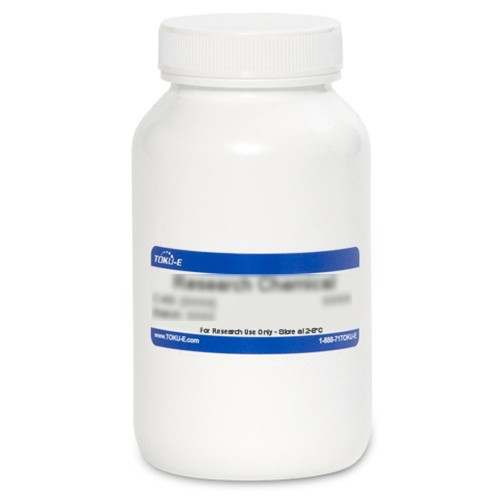Rocuronium Bromide is the bromide salt form of Rocuronium, a fumarate, aminosteroid type non-depolarizing neuromuscular blocking agent that relaxes the skeletal muscle. It was introduced in 1994, and has a similar pharmacokinetic profile to Vecuronium, as it is a derivative of the 3-hydroxy metabolite of Vecuronium. It competes with acetylcholine in binding to cholinergic receptors at neuromuscular junctions. Rocuronium Bromide is soluble in water, ethanol, and DMSO.
| Mechanism of Action | Rocuronium Bromide competes with acetylcholine and binds to cholinergic receptors at neuromuscular junctions. It binds to nicotinic receptors in the neuromuscular junction. It is classified as a neuromuscular nondepolarizing agent since it does not cause depolarization of the motor end plate. |
| Eukaryotic Cell Culture Applications | In the first study of the genotoxic effects of Rocuronium Bromide, human peripheral blood lymphocytes were exposed to Rocuronium Bromide (60, 80 and 100 µg/mL) and analyses included sister chromatid exchange, chromosome aberration, and micronucleus analyses were done. This model is an extremely sensitive indicator of in vitro and in vivo-induced chromosome structural change. Findings from this study suggest that Rocuronium Bromide is clastogenic (induces chromosome aberrations) but not cytotoxic to cultured human peripheral blood lymphocytes at concentrations studied (Zan et al, 2011).
The effect of Rocuronium on formation of main diazepam metabolites in primary culture of human hepatocytes has been examined. It inhibited formation of temazepam (by CYP3A4) by 20% and inhibited formation of nordiazepam (by CYP2C19) by 15%. Thus, interactions of Rocuronium with drugs metabolized by CYP3A4 and CYP2C19 may be observed (Anzenbacherova et al, 2015). The effect of Rocuronium binding to m1-m5 recombinant muscarinic receptors stably expressed in Chinese hamster ovary (CHO) cells was examined. Parameters measured included methacholine inhibition and cyclic AMP formation. Authors found that Rocuronium did not to interact with muscarinic receptors at the concentration used (1 µM) unlike other neuromuscular blocking agents used in the study (pancuronium, vercuronium, pipercuronium and gallamine) where there was a significant interaction with m2 muscarinic receptors (Cembala et al, 1998). |
| Molecular Formula | C32H53BrN2O4 |
| References |
Anzenbacherova et al (2015) Interaction of Rocuronium with human liver cytochromes P450. J. Pharmacol. Sci. 127(2):190-195 PMID 25727956 Sauer et al (2017) Rocuronium is more hepatotoxic than succinylcholine in vitro. Eur. J. Anaesthesiol 34(9):623-627 PMID 28763317 Wicks TC (1994) The pharmacology of Rocuronium Bromide (ORG 9426). AANA J. 62(1):33-38. PMID 8122487
|




